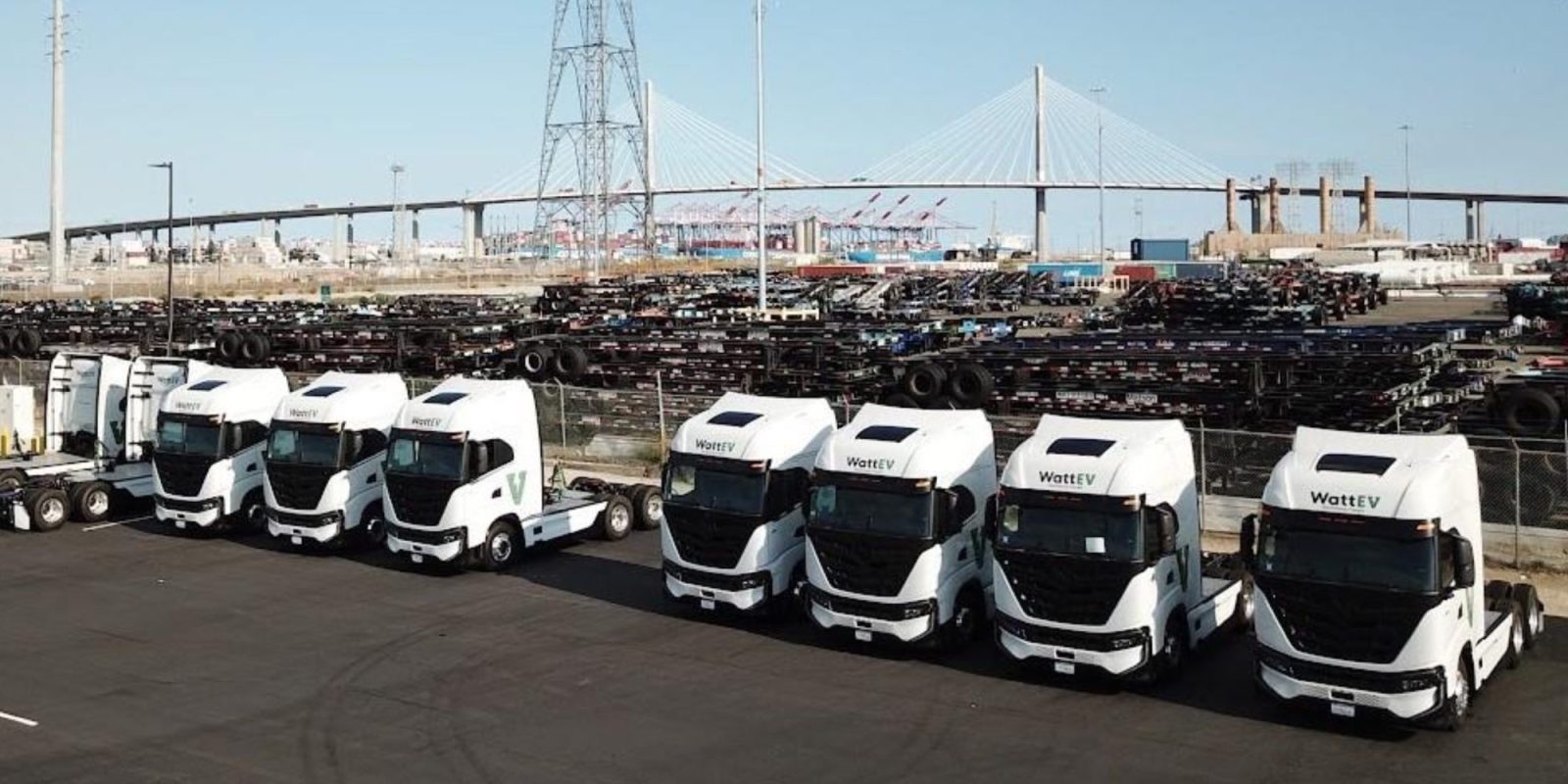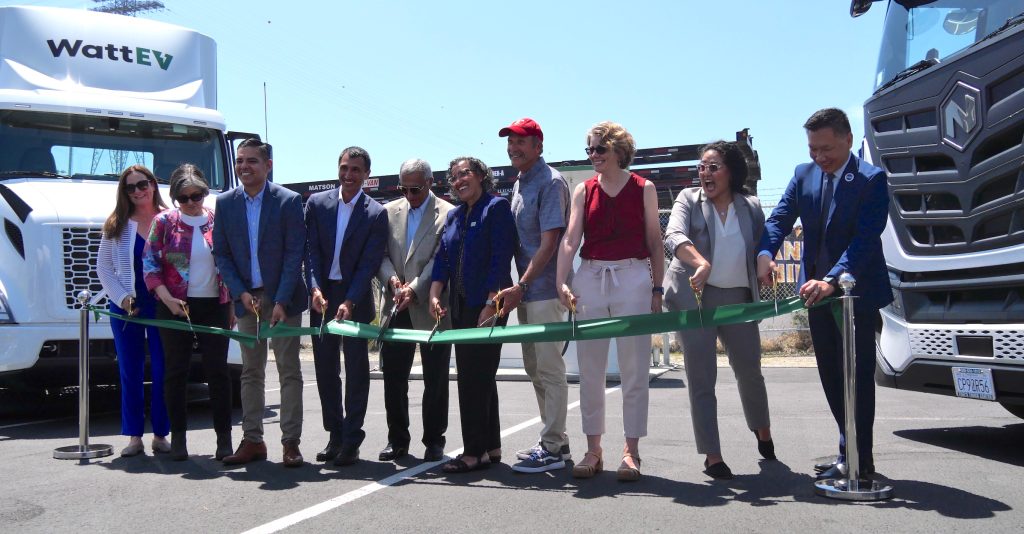
WattEV has opened a 26-port charging depot directly at the Port of Long Beach to charge electric trucks at the United States’ busiest container port. It’s the nation’s largest heavy-duty public access charging station to date.
The Ports of Long Beach and Los Angeles are situated directly next to each other and are the busiest container ports in the Western Hemisphere. The ports see thousands of trucks loaded, unloaded, and dispatched daily and are responsible for 40% of the nation’s containerized imports.
But the area around the Ports has particularly poor air quality, largely due to port activity. Those thousands of trucks run on diesel, contributing to smog, which gets blown into the LA Metro area by onshore winds and trapped by the mountains over the homes – and in the lungs – of 13 million people.
This was a major reason for California’s huge new truck emissions rules. Among other things, the regulations will require all new drayage trucks (those that move cargo around within a port or from ports to railyards or distribution centers) to be electric starting January 1, 2024 – less than six months from now.
But to service these trucks, they will need a lot of chargers. There are a total of some 20,000 trucks registered at the Port of Long Beach, and California will need 160,000 truck chargers to fuel the 180,000 trucks in the state by 2045, when it expects all trucking to be zero emissions.

WattEV and other companies have several charging depots planned to open in the near future to service Southern California distribution routes, but WattEV is the first to open on the actual property of the Port of Long Beach. It’s the first of four planned WattEV projects to open in Southern California.
The new charging depot has 13 dual-cord 360 kW CCS chargers, with a total capacity of 5 MW for the depot. WattEV plans to add another 8 MW of capacity once the upcoming “Megawatt Charge System” (MCS) gets implemented and trucks that use it become available, which the company expects around 2026. Currently, it takes about 2-3 hours to charge, compared to a standard 30-45 minute diesel truck stop break.

WattEV is using these chargers to fuel its “truck-as-a-service” concept, wherein the company offers electric trucking at a set price with lower startup costs. Currently, electric trucks are significantly more expensive to purchase than traditional diesel trucks, despite lower long-term running costs and lower total costs of ownership (and, of course, lower environmental costs for all of our lungs). However, startup costs can be prohibitive, especially for small owner-operators who make up such a large part of the industry. WattEV wants to solve that problem by offering a set-price operation at a comparable cost to running a diesel truck.
There are larger electric truck charging stations, like this recent 32-port station opened by Schneider, but those are “behind-the-fence” and used by private fleets. WattEV’s chargers are also public access and can be used (via credit card) for opportunity charging by other electric trucks operating at the port.
Electrek’s Take
Driving down to today’s opening, our only company on the 710 freeway consisted of semi trucks, in both directions. And as we got closer to the port, it got noisier, stinkier, and the air got less clear. It also happens to be a summer where heat records are being set all around the globe, seemingly every day. And during the event, the droning noise and smell of idling diesel trucks directly behind us made everything just a little bit harder.
If only there were one solution that could solve literally all of these problems at the same time. Can anyone think of it? Hmm…
But it’s going to take a lot of work to get us there. This property today is the largest public access charger in the US, but we’ll need hundreds of depots like this in California alone, and with future faster charging through MCS, in order to service the traffic coming in and out of the port and running through the state.
So we hope we’ll see many more openings like this and soon – to the point where it’s no longer interesting to write about them.
FTC: We use income earning auto affiliate links. More.






Comments